The 28th Anniversary World Congress on Biosensors was held on June 12-15, 2018 in Miami, Florida. It is the premier event for the biosensors community and the largest in the field. Over 900 delegates from 48 countries around the world attended this meeting, where the US, South Korea, China, Japan and the UK were the top countries that were represented. There were 15 topics, including biosensors and bioelectronics, microfluidics, nanobiosensors and nanomaterials, etc.
Our team members included Dr. Yanbin Li, Dr. Ronghui Wang and PhD student Xinge Xi from University of Arkansas, PhD student Gaozhe Cai and PhD student Lingyan Zheng from China Agricultural University, and Dr. Yingchun Fu, PhD student Zhishang Li from Zhejiang University attended this meeting. They had a friendly meeting with Prof. Turner, the executive chair of this meeting and chief editor of Journal of Biosensors and Bioelectronics.
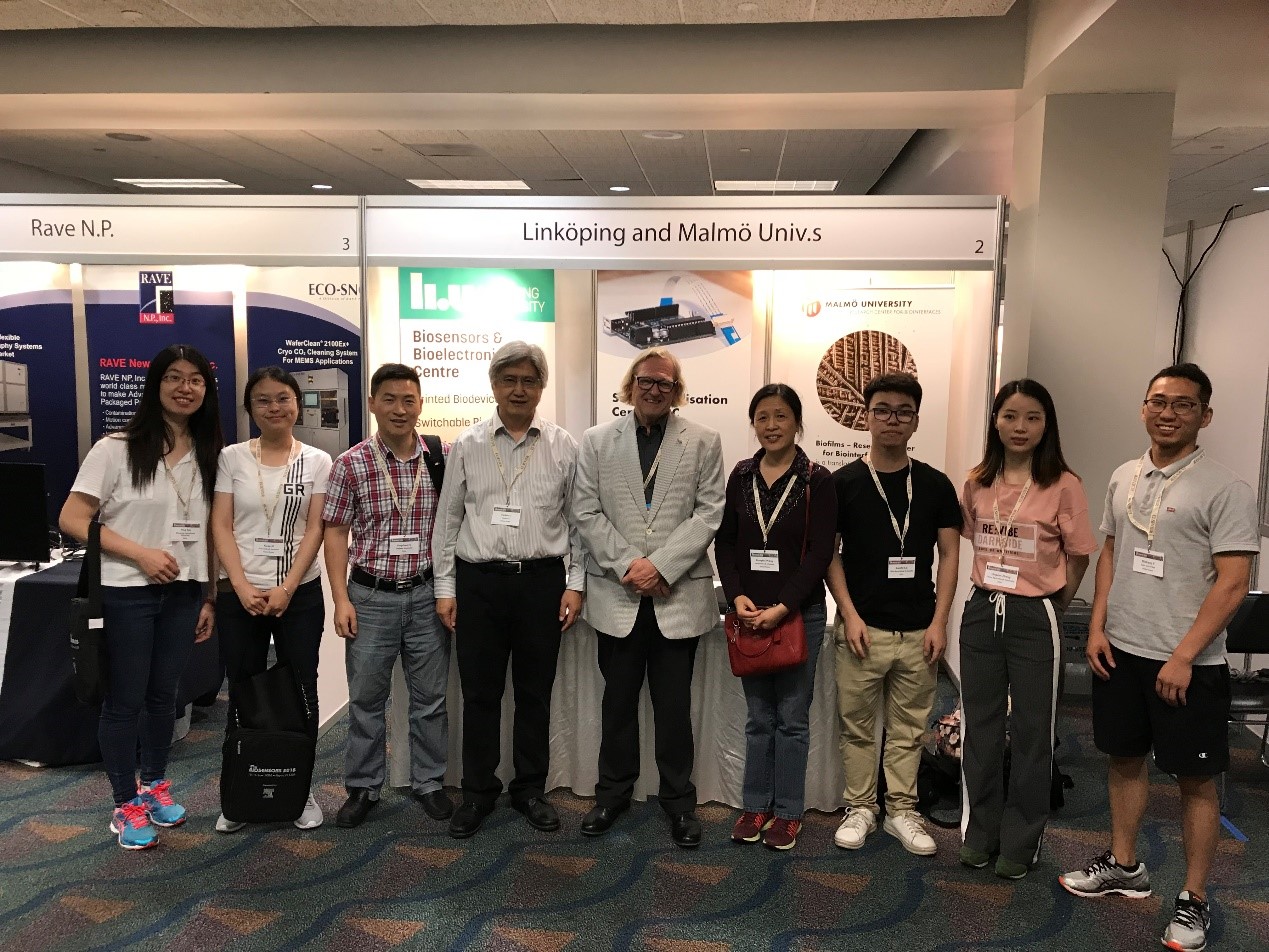
From left to right: Dr. Ping Yao, Xinge Xi, Prof. Yingchun Fu, Prof. Yanbin Li, Prof. Anthony Turner, Dr. Ronghui Wang, Gaozhe Cai, Lingyan Zheng, Zhishang Li
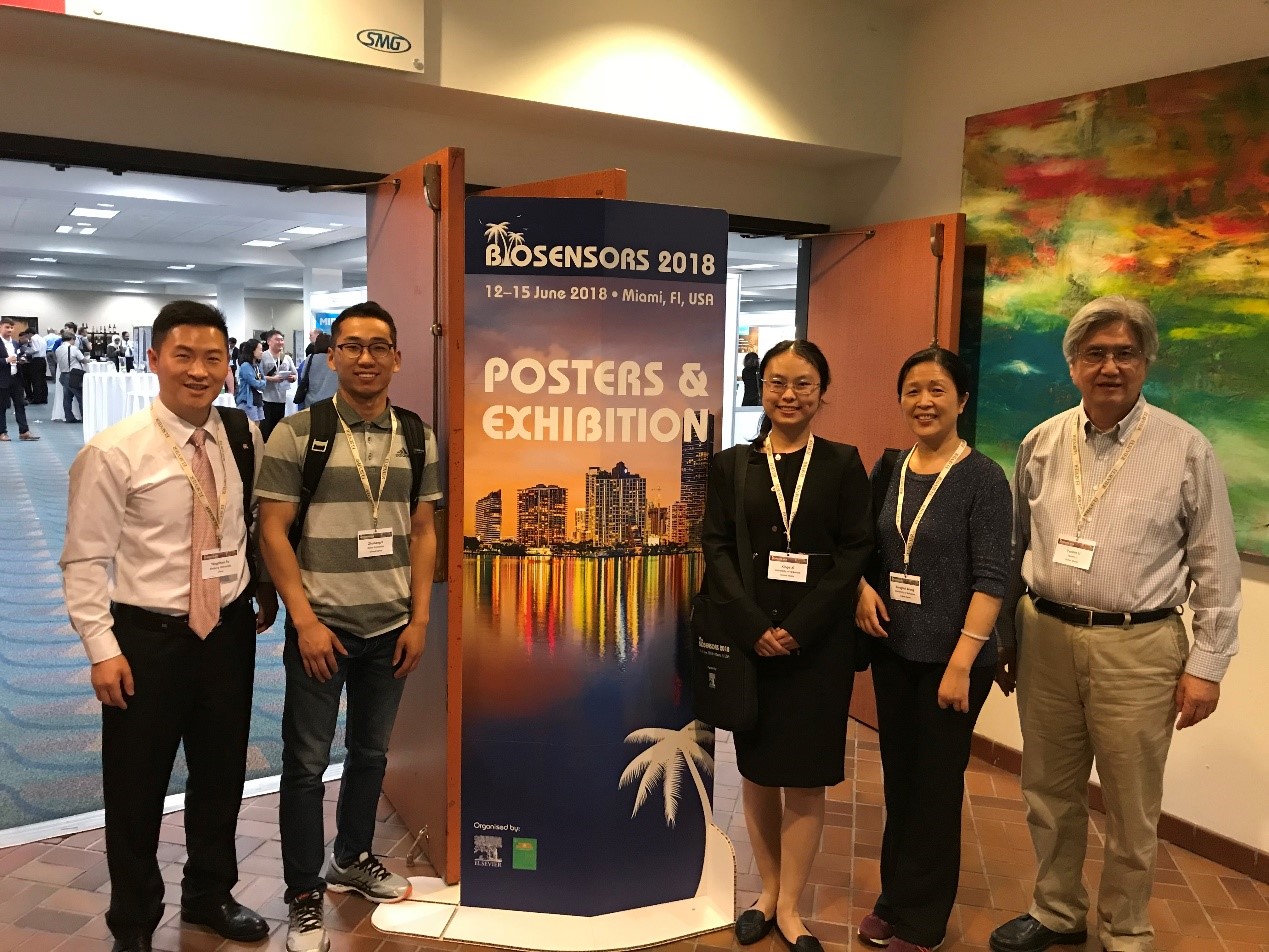
From left to right: Prof. Yingchun Fu, Zhishang Li, Xinge Xi, Dr. Ronghui Wang, Prof. Yanbin Li
Xinge Xi presented her poster “A label-free impedance immunosensor based on multi-walled carbon nanotube electrode for rapid and sensitive detection of E. coli O157:H7” on Wednesday, June 13, and Dr. Ronghui Wang did her poster presentation “Rapid and sensitive detection of salmonella typhimurium using a LSPR sensor based on polydopamine surface imprinted recognition polymer” on Thursday, June 14. PhD student Gaozhe Cai and PhD student Lingyan Zheng, both from China Agricultural University, displayed their posters on the rapid detection of foodborne pathogenic bacteria. The titles of their posters were “A lab-on-a-chip platform for quantitative detection of foodborne bacteria using immunomagnetic separation, enzymatic catalysis and distance indication” and “A microfluidic colorimetric biosensor for rapid detection of Escherichia coli O157:H7 based on gold nanoparticle aggregation and smart phone”, respectively. PhD student Qi Zhang, Zhishang Li, Lulu Cao, Lin Zhang, Huang Dai from Zhejiang University had their poster displayed with the titles of “Multi-templating method based on electrochemical conversion of magnetic nanoparticles to prepare porous nanocomposites for biosensing”, “A water-stable luminescent metal-organic framework for effective detection of Aflatoxin B1 in walnut and almond beverages”, “Exploring more for magnetic nanoparticles: separation/concentration-signal-generation in one method for biosensing”, “Bio-inspired preparation of fibrin-adhered-graphene bionanocomposites to develop multi-functional conductive platform for electrochemical biosensing”, and “A colorimetric biosensor based on enzyme-catalysis-induced production of inorganic nanoparticles for sensitive detection of glucose in wine”, respectively.
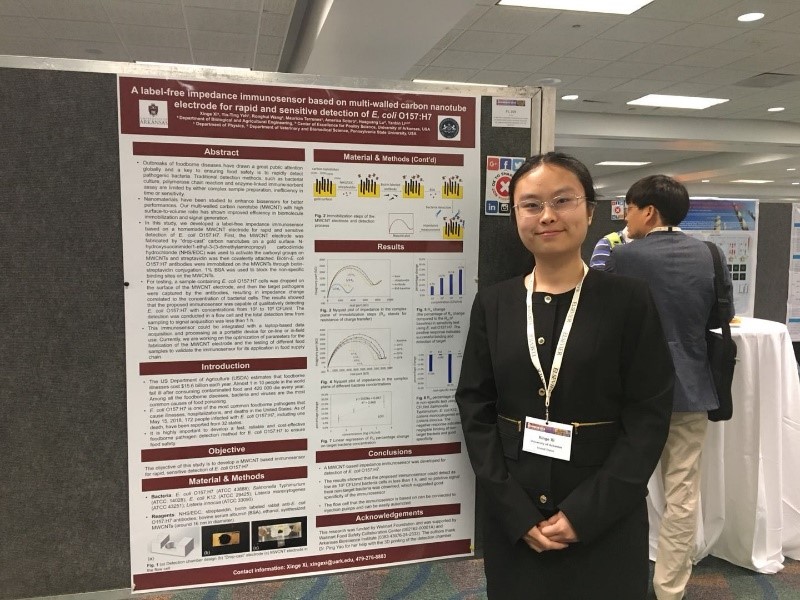
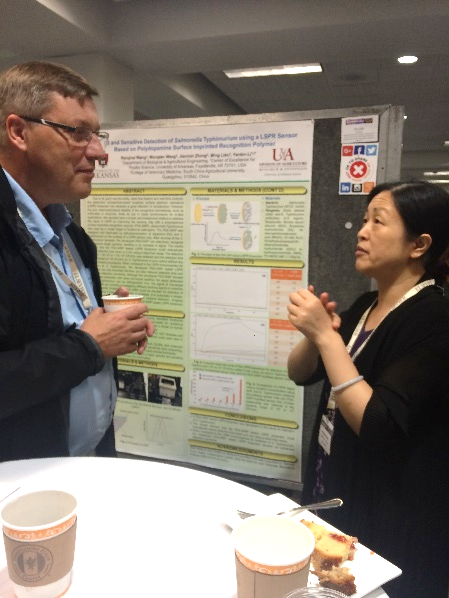
PhD student Xinge Xi (left) and Dr. Ronghui Wang (right) were presenting their posters
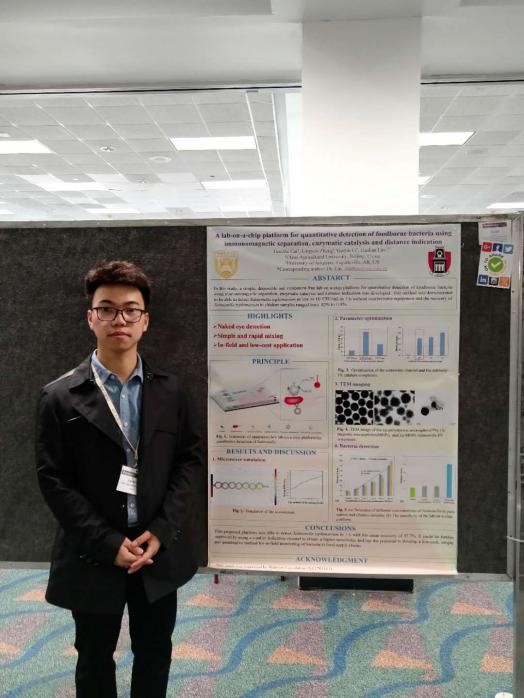
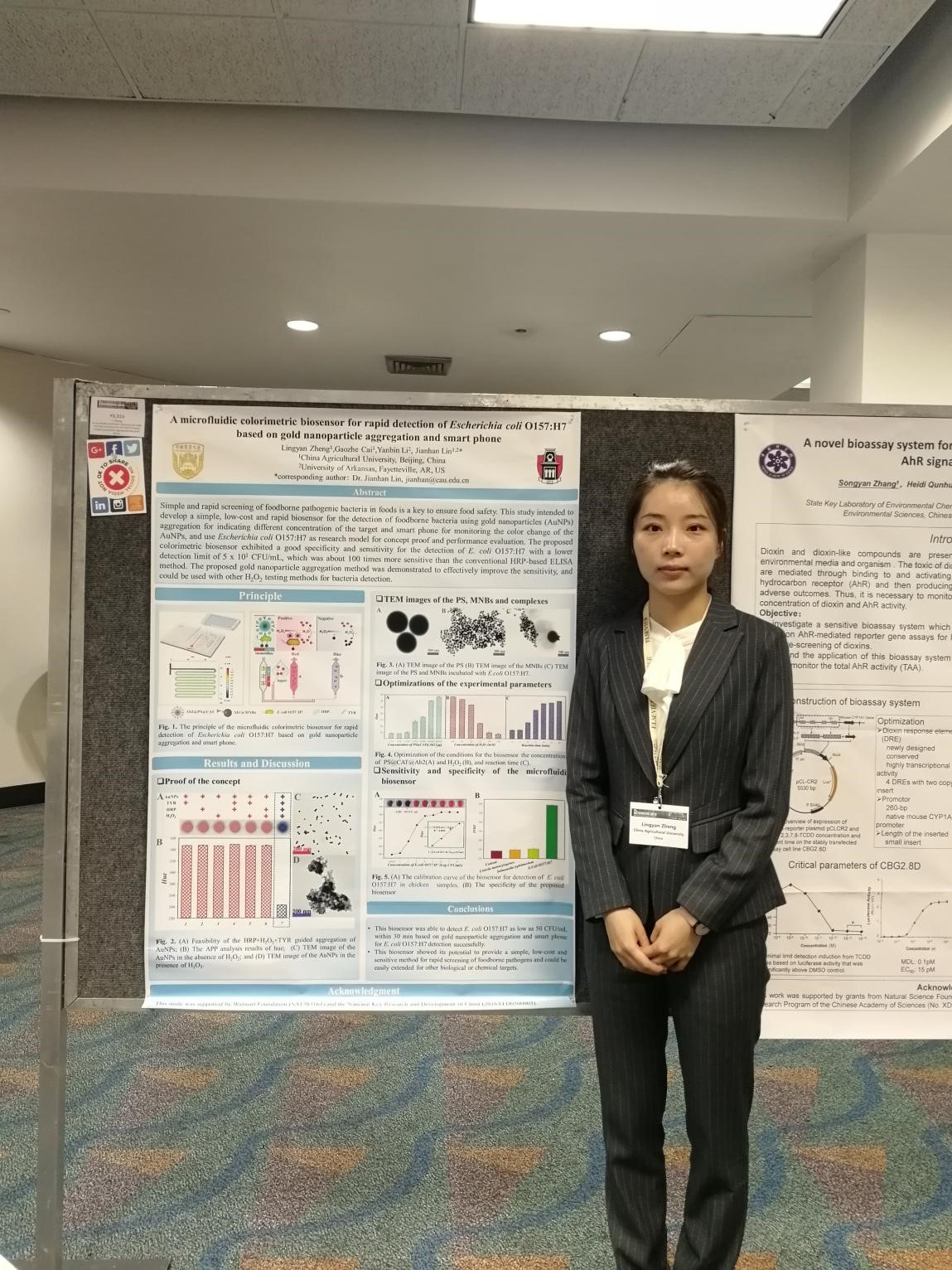
PhD student Gaozhe Cai (left) and Lingyan Zheng (right) and their posters